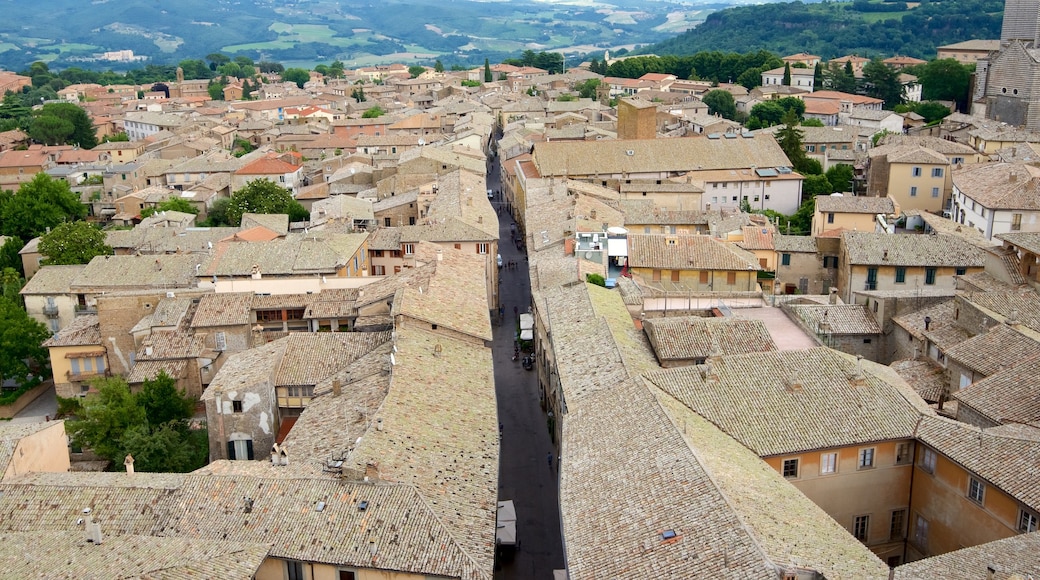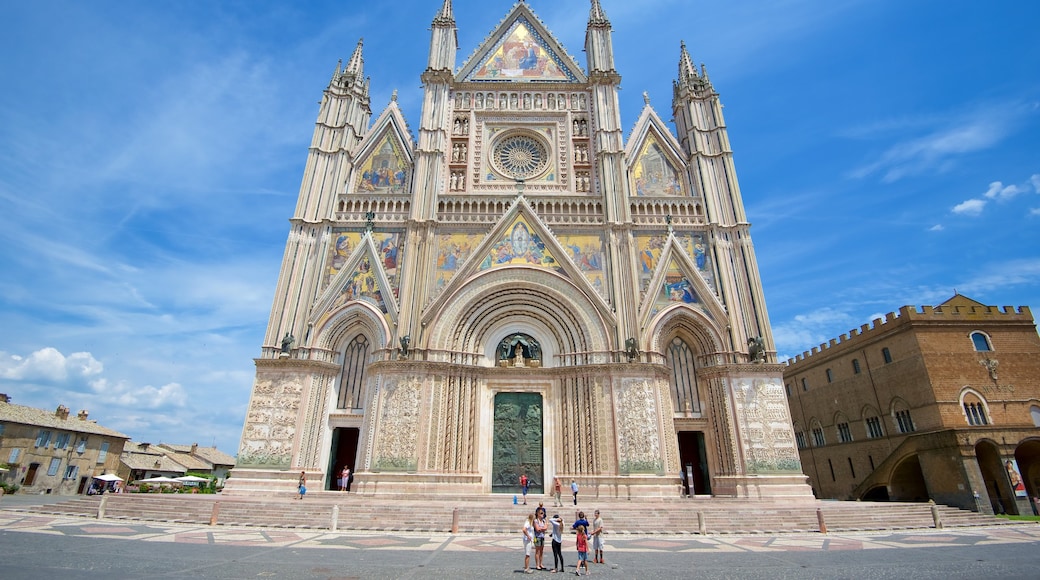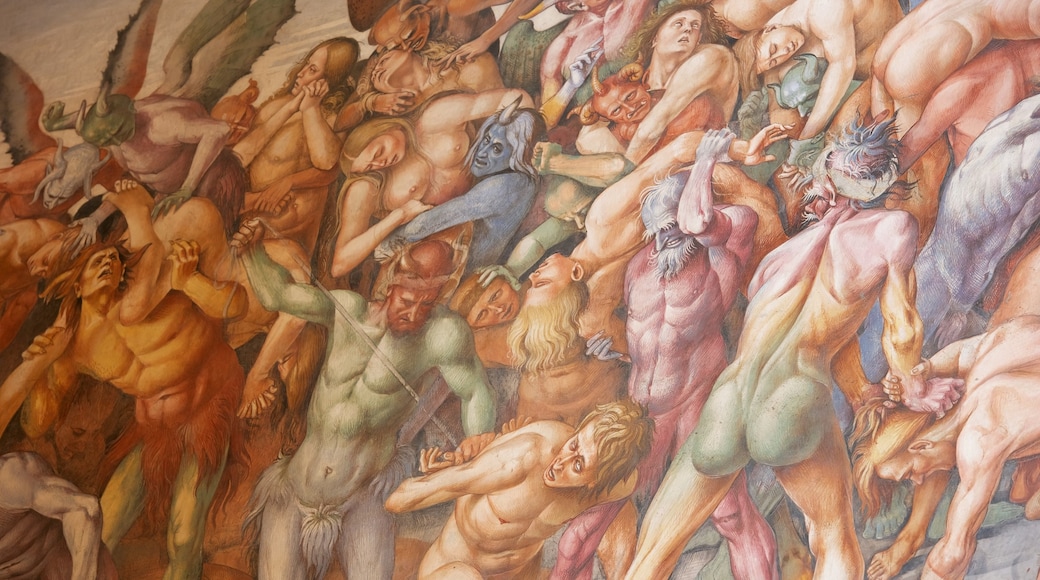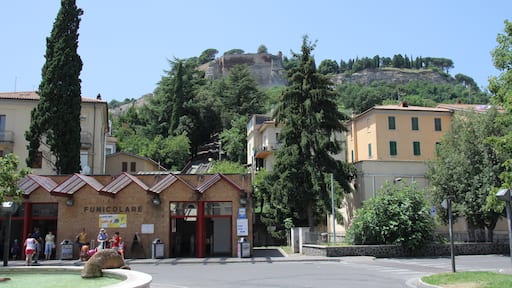A hilly old town district and a labyrinth of underground tunnels reveal the fascinating history of Orvieto. The village stands atop a volcanic plateau, offering outward views of vineyards and olive tree plantations. Wander along the narrow cobbled streets of the town’s medieval core for a sense of its rich history.
Arrive at the Orvieto Railway Station and take the charming Orvieto Cable Car up to the old town via the hilly tree-lined countryside. The funicular dates back to 1888 and is a picturesque mode of transport.
Purchase the Carta Unica Orvieto to get access to the sites of the old town. The highlight is the Duomo di Orvieto, with its flamboyant façade of frescos, bas-reliefs and mosaics. Enter the San Brizio Chapel to see the extraordinary 15th-century Giudizio Universale fresco that occupies the entire wall.
Among the historic piazzas and churches rises another of the town’s icons, the Moro Tower. Climb the steps to its top for views of the town and surrounding countryside. Note the mechanized clock and hear the booming bell toll emanating from this integral part of Orvieto’s history.
On a clifftop that marks the fortified town’s eastern limits is St. Patrick’s Well. It was commissioned by Pope Clement VII during his time in hiding in Orvieto following the 1527 sacking of Rome. Delve into the well’s chasm via one of its two spiral staircases.
Located in the province of Terni in the southwestern part of Umbria, Orvieto experiences the hottest weather in July and August, while November is the wettest. The town is in the center of Italy, between Florence and Rome. Fly to Perugia Airport, 50 miles (80 kilometers) northeast of the commune.
Orvieto has a remarkable old town that rises above the undulating Umbrian hills as a reminder of its enthralling history.













